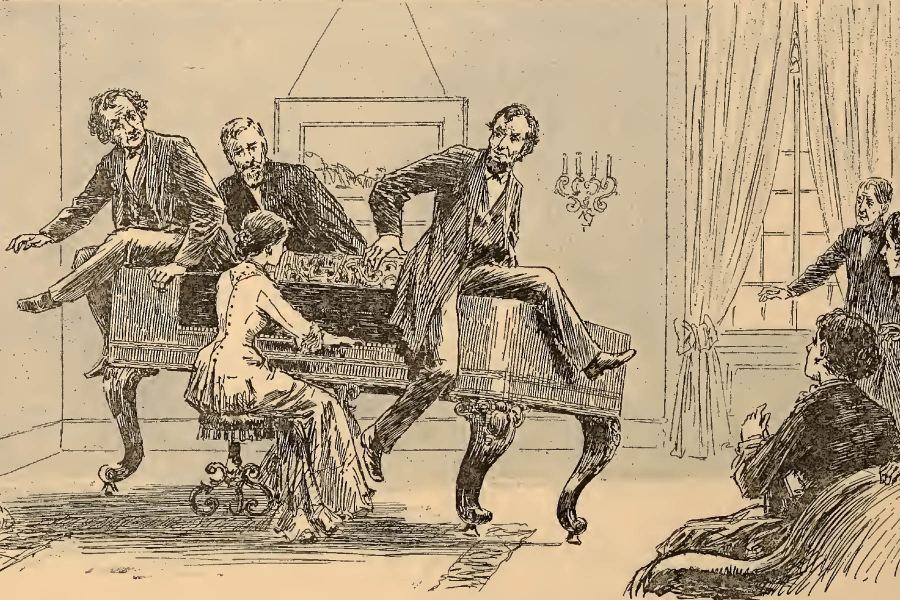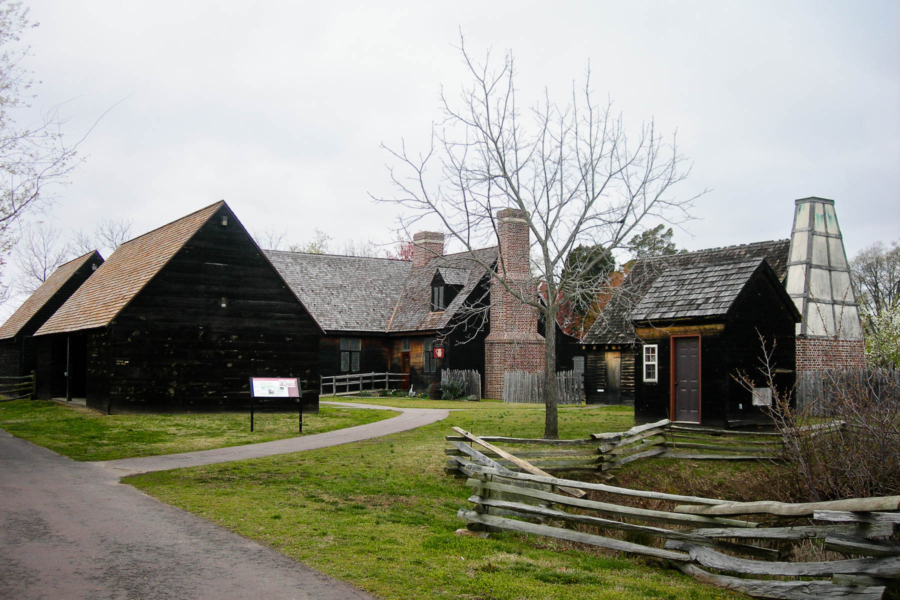Witch stories from around the watershed
Chesapeake “witches” were healers, naturalists and nonconformists

The idea of witches has been around since before 800 B.C., but they are most commonly associated with the Salem witch trials, which took place in 1692. But did you know the Chesapeake region has its own witch legends and lore? And on a more serious note–its own sad history of witch trials and executions.
While the term “witches” brings to mind an older woman with warts on her nose, wearing black, riding a broomstick and casting spells over a bubbling cauldron, in reality, the people accused of being witches were often healers, had extensive knowledge of herbs and plants, practiced other types of religion, were of a different cultural background or simply acted in ways other than what society was used to at the time. Accusations of witchcraft tended to occur when crops failed, farm animals died or illness spread throughout a town.
While the witch trials in Salem and other parts of the Northeast condemned far more accused witches than those in the Chesapeake region, torture and death were used as routine punishments for those who were found guilty of witchcraft. But not every part of the watershed thought witches were evil. In some areas, they were sought after for their expertise in healing. Read on for a few tales from around the watershed.
The Witch of Pungo
Probably the most well-known accused witch throughout the Chesapeake region was Grace Sherwood of Pungo, Virginia, near current-day Virginia Beach. But she isn’t famous just for being accused of witchcraft. The fearless colonial woman actually fought back against her accusers, suing them for defamation, and survived the notoriously deadly water test.
Sherwood was a poor farmer’s wife, who had some medical knowledge, using it to help her neighbors when they or their animals were ill. But historical records also note that she wore pants when she worked and spoke up for herself–which was not common at the time. She was first accused of being a witch in 1697, when a neighbor complained that she had caused his animals to sicken and die. She was acquitted of these charges and ended up counter suing for defamation, eventually settling out of court. But she continued to have accusations thrown at her–for causing crops to die and for shape-shifting into a cat. Sherwood fought back in court every time, but was unsuccessful. In 1706, a neighbor claimed that Sherwood had bewitched her, causing her to miscarry. This time, Sherwood was arrested and thrown into jail. At her trial in July of that year, the judge decided she would be tried by a water trial, or ducking.
During a water trial, an accused witch was bound from head-to-toe, sometimes weighed down and thrown in the water. If they sank, they were deemed innocent. If they floated, they were clearly guilty of witchcraft. Records note that Sherwod was tied from her left thumb to her right toe, and her right thumb to her left toe. She was then covered with a sack, with a 13-pound Bible tied around her neck and thrown into the water. Somehow she managed to untie herself and swam to shore. Onlookers noted that when the ducking began, it was a clear day–but once Sherwood was pulled from the water, the sky opened and rain poured down. Surprisingly, she was not executed but did spend several years in jail.
On July 10, 2006–300 hundred years to the day of her ducking–then-Virginia Governor Tim Kaine formally pardoned Grace Sherwood. The spot along the Lynnhaven River in which she was thrown is now known as Witchduck Point.

Maryland’s Only Executed Witch
Maryland adopted the Witchcraft Act of 1604, which made practicing witchcraft punishable by death, in 1635. While a handful of accused witches were put on trial under this law, only one was executed–Rebecca Fowler of Calvert County. In 1685, Fowler and her husband owned a plantation called Fowler’s Delight, which used indentured servants for labor. One of these indentured servants, a man named Francis Sandbury, sustained some type of injury and ended up arguing with Fowler. During the confrontation it was rumored she cursed him. Sandbury then reported her as a practicing witch and she was arrested.
Fowler was taken to St. Mary’s City, which was Maryland’s state capital at the time, and was found guilty of being “led by the instigation of the Divell'' to practice “certaine evil & dyabolicall artes called witchcrafts.” On October 3, 1685 she was put to death by hanging. Fowler’s Delight is now part of the Mount Calvert Historical and Archeological Park, owned by the Maryland-National Capital Park and Planning Commission.
The Witches of Georgetown
Margaret Ann and Belle Laurie were a mother and daughter who were practicing psychic mediums when they lived in the Georgetown neighborhood of Washington, D.C. They were known for the incredible feats they were able to summon–from calling up the spirits of the dead and relaying messages to their living loved ones to playing a levitating piano. The Lauries became so well-known that even President Abraham Lincoln and Mary Todd Lincoln attended their seances, and invited them to the White House on more than one occasion.
After President Lincoln’s assassination, his wife continued to visit the Lauries, hoping to connect with her husband’s spirit. The Chicago Historical Society owns a letter containing a lock of his hair that Mary Todd Lincoln provided to the Lauries in order to better summon him. The mediums passed away in the 1870s and 1880s and are now buried in Congressional Cemetery in Washington, D.C. Their house still stands to this day and continues to be occupied.
The Granny Witches of West Virginia
In contrast with their neighboring states, West Virginia revered and celebrated its witches as an important part of Appalachia folklore. When settlers from different backgrounds representing various cultures settled in West Virginia, they brought with them their own knowledge of herbs, plants, medicine and healing. Throughout the 19th and 20th centuries, these granny witches–which could be both women and men—were the ones to seek out for medical care in these rural, isolated areas.
And they were called upon to help with more than medicine. For instance, local water witches would be sought out when someone wanted to dig a well on their property, as they knew the right spells and knowledge to locate the best place in which to find water. They passed their knowledge down through generations, ensuring the practice of folk magic remains rooted in Appalachia culture, where it is still practiced to this day.
Does your area have local legends and lore about witches? Let us know about it in the comments!

Comments
There are no comments.
Thank you!
Your comment has been received. Before it can be published, the comment will be reviewed by our team to ensure it adheres with our rules of engagement.
Back to recent stories